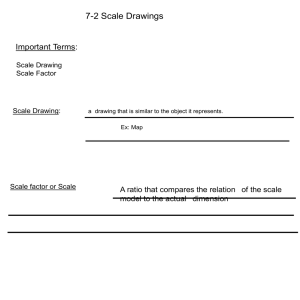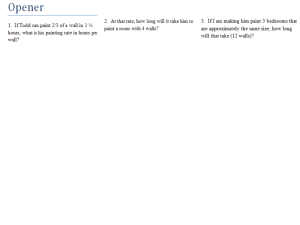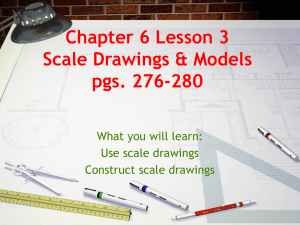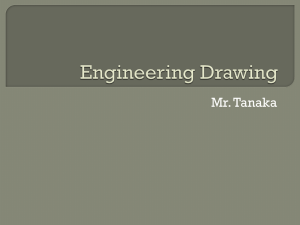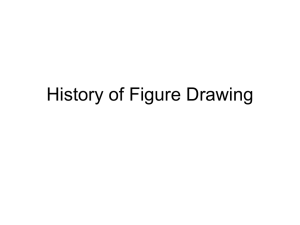5.4: Scale Drawings
advertisement
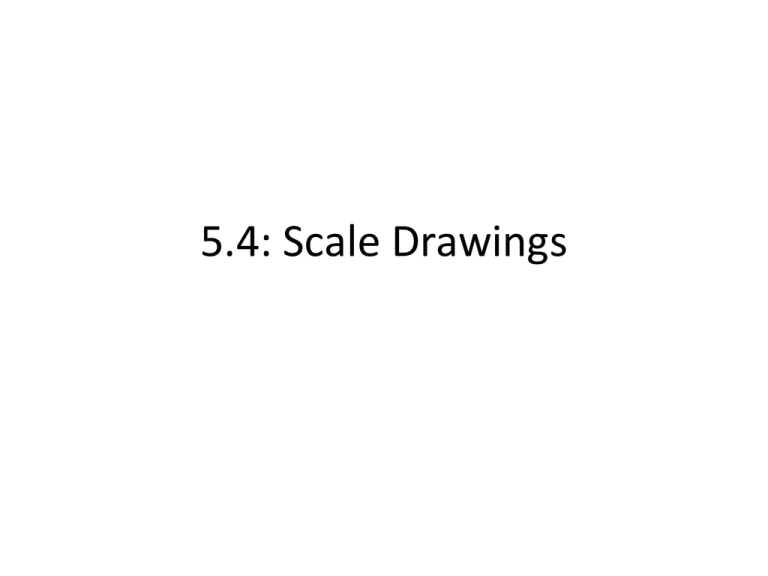
5.4: Scale Drawings Scale Factor • The relationship between measurements on the drawings can be described by using a scale factor. • When you make a drawing twice as wide and twice as tall, your scale drawing has a scale factor of 2:1. 1/2 inch on the original = 1 inch on the scale drawing. Scale Factor • So, the scale factor is always written as measurement on model : measurement on actual or original Or Original: Each square = ½ inch Drawing: Each square = 1 inch Scale Factor: 2:1 or 2/1 Simplifying the Scale Factor Original: Each square= 1/2 inch Drawing: Each square = 1/4 inch What is the scale factor on the smaller scale drawing of Calvin? Scale Factor Scale factors are usually expressed using 1 unit. Real Eiffel Tower: 324 meters tall •LEGO Eiffel Tower: 1.08 meters tall. Instead of writing 1.08 : 324, we write 1 : 300 or 1/300 Common Scale Factors • House Plans/Floor Plans: ¼” scale, which means 1/4 inch stands for 1 foot: 1:48. • N scale model trains: 1:148. • Hot Wheels: 1:64 • Radio-controlled car: 1:10 • Traditional Dollhouses: 1:12, 1:18, or 1:24 • Barbie Dollhouse: 1:6 Using scale factors: Practice Scale Models and Drawings are Proportional • The reason a scale model or scale drawing looks similar to the actual or original thing is that all measurements on the model/drawing are proportional to measurements on the actual/original. • This means that every part of the drawing is the same number of times bigger or smaller than the original or real thing. Stewie’s foot on the original drawing is ½ inch long. • How long is Stewie’s foot on a 2:1 drawing? • On a 0.5:1 drawing? • If you made a 10:1 scale drawing of the original Stewie, how long would his foot be? Scale • Another way to relate models to actual things is to use a scale, which includes units in different measurements. Use a Proportion to Solve Scale Drawing/Model problems. Practice


